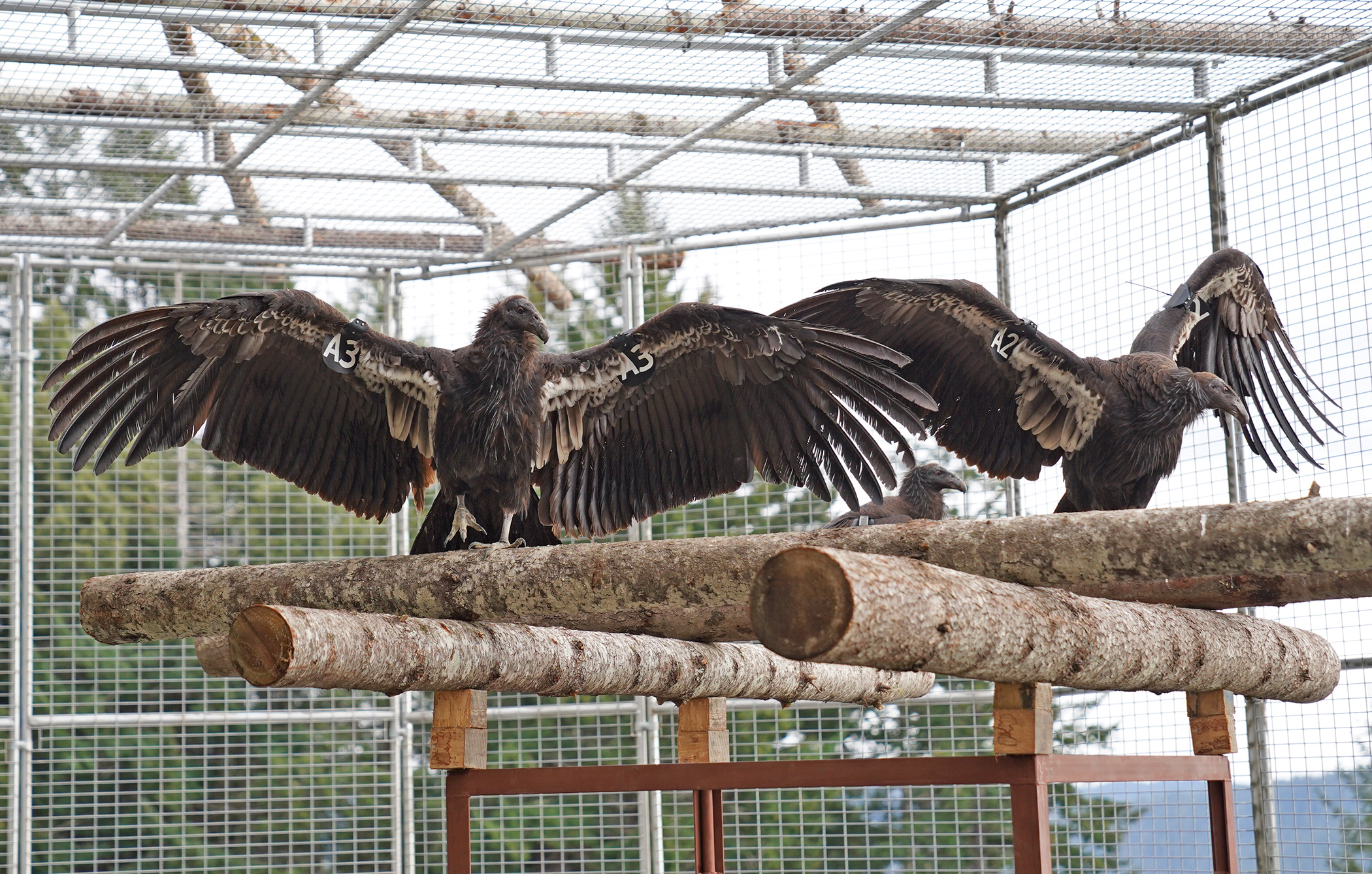“Prey-Go-Neesh Keech Ke-Me’-Yehl – Condors Have Come Home!”
For the first time in more than a century, the endangered California condor soared the skies over the state’s redwood forests along the far northern coast and more releases are expected in the future.
Two captive-bred male condors (Prey-go-neesh in Yurok) play a principal role in the Yurok tribe’s creation story and is prominently featured in its White Deerskin and Jump Dances. The birds were released from a pen in Redwood National Park on May 3, under a project aimed at restoring the giant vultures to their historic habitat in the Pacific Northwest.
“They just jumped up and took flight off into the distance,” said Tiana Williams-Claussen, of the region’s Yurok trib
The release was a collaboration between the tribe, National Parks Service and US Fish and Wildlife Service (USFWS), taking place in the northern California redwood forest, containing some of the planet’s tallest trees.
Now, the forest also contains some of the planet’s largest — and most endangered — birds which disappeared from the area around 1892.
Once, the California condor ruled the skies across western North America; their nine-foot wingspans casting shadows on habitats as diverse as the arid scrubland of southern California to the forests of the Pacific Northwest.
But by 1980s, the global condor population had dropped to 27 birds, decimated in part by hunting and lead poisoning, Now, the population in California, Arizona and Utah stands at just over 300 birds.
It was here in SoCal when the recovery started in 1983. The USFWS teamed up with the L.A. Zoo and San Diego Wild Animal Park to start the first-ever captive breeding facilities, now numbering four.
In 1987 the condor went extinct in the wild, last captured in Southern California for the zoo breeding project to bring them back from the brink of extinction with only 22 of them sighted that year. By 1991 there were enough adolescent condors that it was possible to release them into the wild, but that didn’t happen until 2003 and by 2008 there were more condors released into the wild than in captivity. Breeding facilities in addition to the first two came online via Santa Barbara and Oregon zoos, Chapultepec Zoo in Mexico City and in Boise, Idaho.
Despite success, the condor is still listed a critically endangered because of human activity, notably lead poisoning. USFWS reports in the last 20 years there were 120 documented deaths from lead poisoning, half of all 234 condor deaths. California started banning lead ammunition in 2019. To keep track, go to: https://tinyurl.com/CondorsStory
The Yurok Tribe started working on condor reintroduction in 2008.
More details including a livestream are at : https://www.yuroktribe.org/
~ By ‘Condor’ John Hankins
